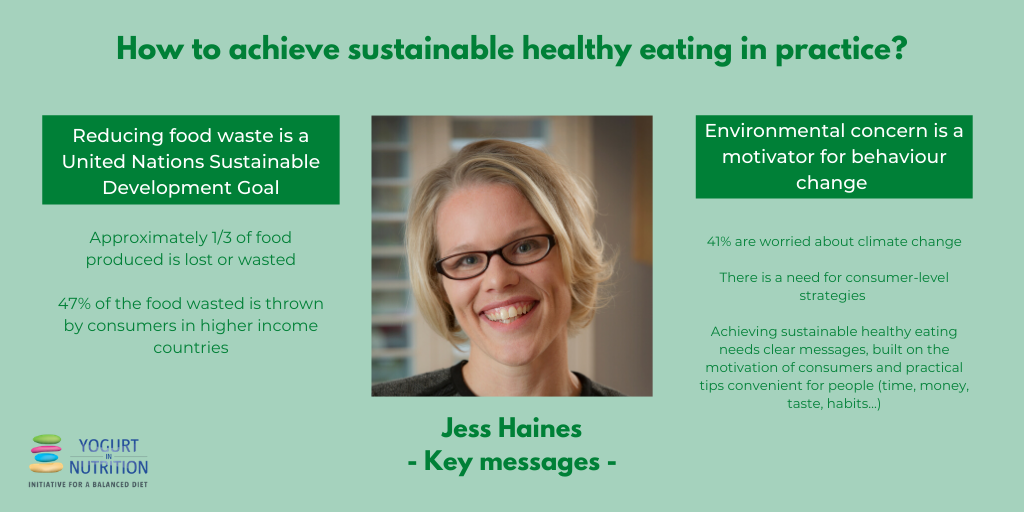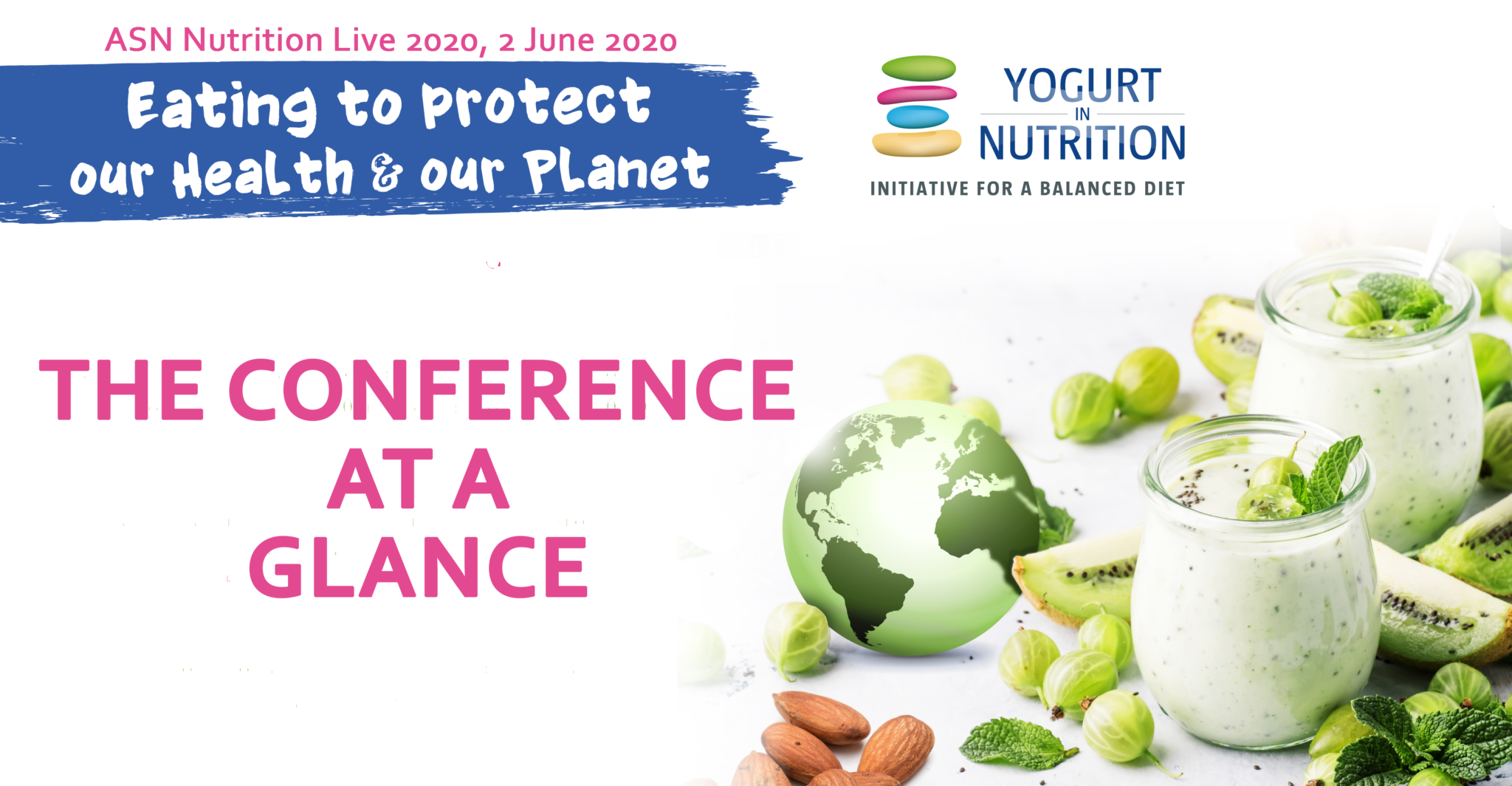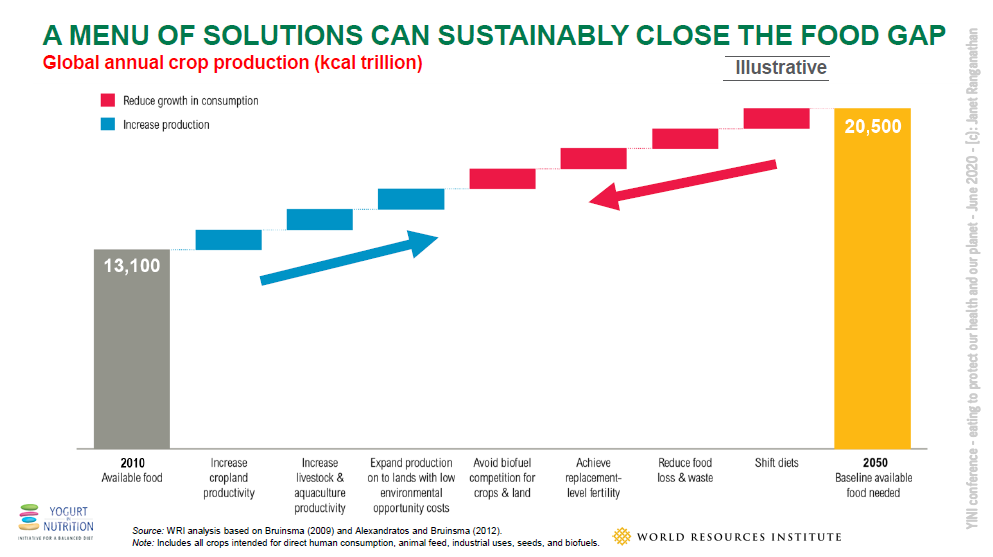In a unusual context of pandemia and raising global concerns about health, well-being or environment, the Yogurt in Nutrition Initiative gathered scientists worldwide through an online event to focus on ”eating to protect our health and our planet”.
The overall goal of this 8th summit is to highlight the need to transform our food system to ensure a sustainable future for ourselves and the planet.
“Creating a sustainable food future: a menu of solutions to feed nearly 10 billion people by 2050”, “Healthy and sustainable diets: What do we learn from modeling studies”, “How to achieve sustainable healthy eating in practice?” Those are some of the questions that Janet Ranganathan (WRI, USA), Pieter van’t Veer (Wageningen University, the Netherlands) and Jess Haines (University of Guelph, Canada) have addressed during the YINI live event, organized on Tuesday 2nd of June, during the Live Nutrition 2020.
Creating a sustainable food future: a menu of solutions to feed nearly 10 billion people by 2050
As the global population grows toward 10 billion in 2050, overall food demand is on course to increase by more than 50% relative to 2010, and demand for animal-based foods by nearly 70%.
According to Janet Ranganathan, feeding 10 billion people sustainably by 2050, requires closing three gaps:
- Food gap between crop calories produced in 2010 and those needed in 2050;
- Land gap between global agricultural land area in 2010 and expected agricultural expansion by 2050; and
- GHG mitigation gap between expected agricultural emissions in 2050 and the target level needed to hold global warming below 2oC (3.6°F), the level necessary for preventing the worst climate impacts.
Therefore, 22 solutions have been identified and would need to be simultaneously applied.
Janet Ranganathan summarized those solutions into five clusters:
- Reduce growth in demand for food and other agricultural products;
- Increase food production without expanding agricultural land;
- Protect and restore natural ecosystems;
- Increase fish supply; and
- Reduce GHG emissions from agricultural production.
The relative importance of each solution varies from country to country.
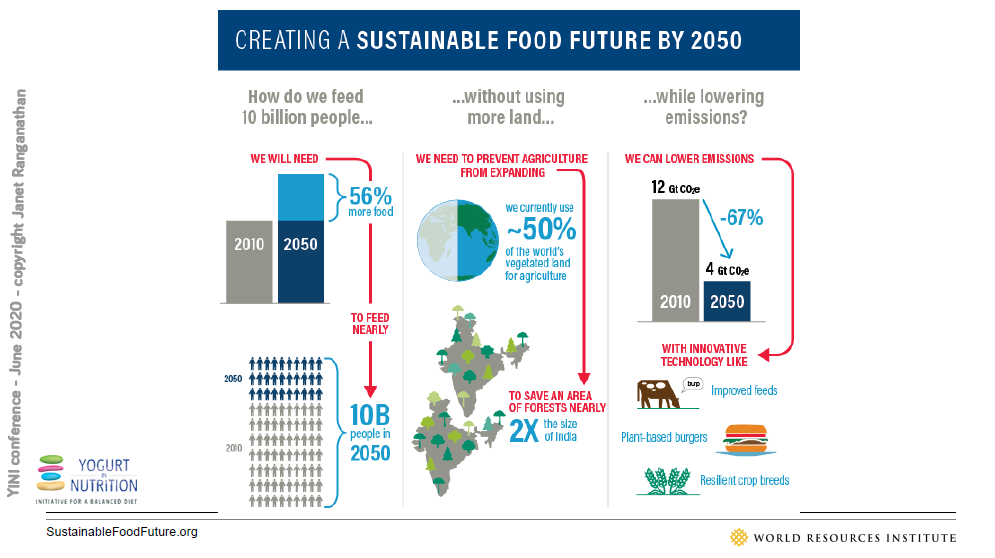
For more information: SustainableFoodFuture.org
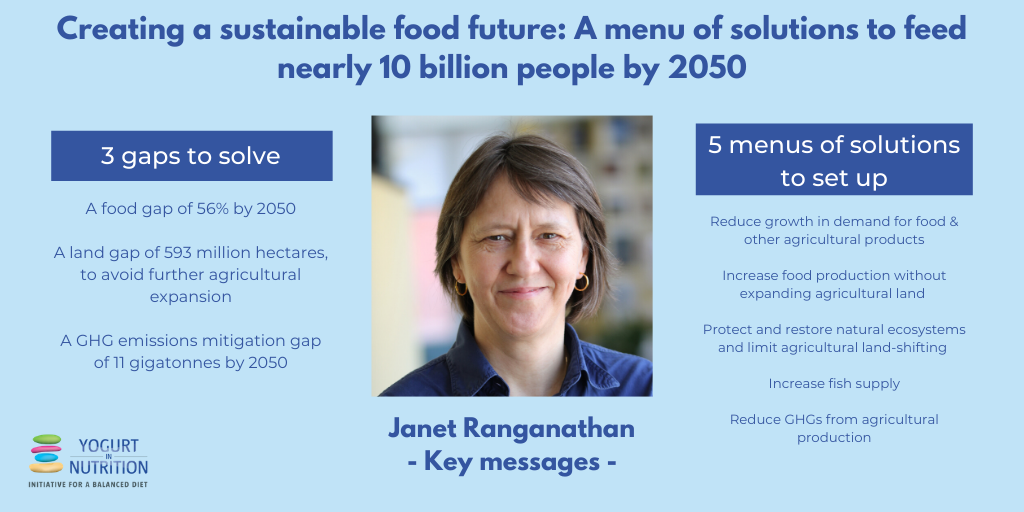
Healthy and sustainable diets: What do we learn from modeling studies
After this global focus made by Janet Ranganathan, it was interesting for Pieter van’t Veer to focus on the data available from several modelling studies, allowing to see the impact of potential sustainable healthy diets.
According to Pieter van’t Veer, linear programming, combining foods that fulfills preset criteria on daily nutrient requirements and environmental indicators, have been used extensively in order to design healthy and sustainable diets. In those models, the acceptability to consumers is hard to account for. However, a benchmarking approach (Data Envelopment Analysis, DEA) allows to sort the ‘best practices’ of whole diets into new diets that are subsequently optimized for minimal deviation from current diets, nutritional quality, and environmental sustainability, with their pro’s and con’s.
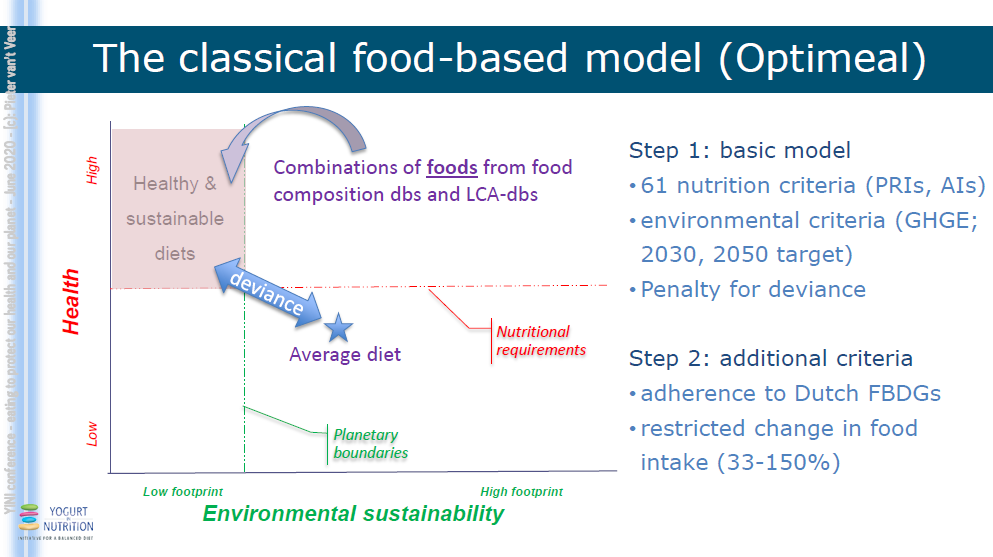
As an example, a food-based model (Optimeal) was used to generate diets for Dutch adults. Its input data were current average food consumption, food composition, nutrient requirements and GHGE-targets. Consumer acceptability was incorporated as well. According to the model, a healthy diet consistent with the Paris agreement on Climate Change required a shift from animal- to plant-sourced foods, a reduction or elimination of cheese, a reduction of 10% (2030 target) to 60% (2050 target) of liquid dairy. The diet became unrealistic when very strict criteria for GHGE reduction (2050 target) were applied.
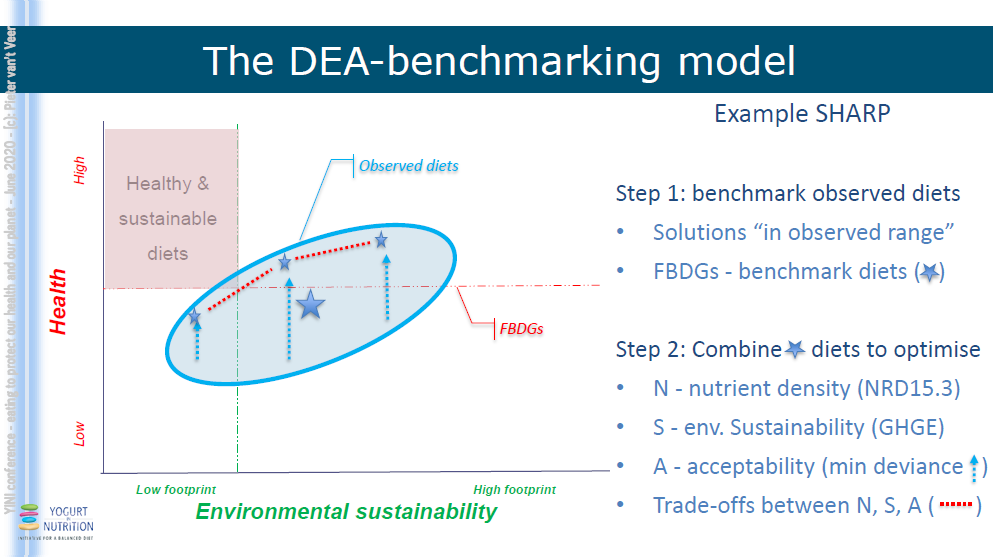
On the same approach, a diet-based model (SHARP-model) was applied to adults from four EU countries (Danemark, Czeck Republic, Italy and France). Modelled and observed diets (based on days menus) had a similar proportion of animal- and plant-sourced foods, but energy density was lower. Protein sources shifted from red and processed meat to either eggs, fish or dairy. Depending on the country, liquid dairy increased to 105-145%, cheese changed to 77-122% of current intakes.
Both modelling approaches suggest that dairy fit into healthy and sustainable diets. This is because of the nutrient richness and lower GHGE footprints of liquid dairy as compared to other animal-sourced products. Depending on the nutrient provision in a country, cheese may need reduction when strict GHGE targets are set. As compared to Optimeal, the SHARP-benchmarking model resulted in less extreme dietary changes with smaller improvements in nutritional quality and GHGE-reduction.
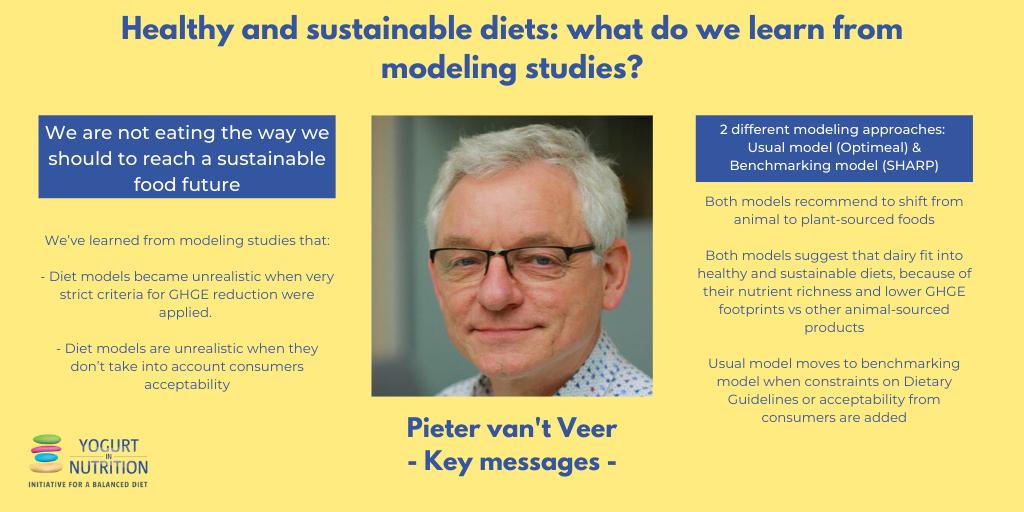
How to achieve sustainable healthy eating in practice?
Finally Jess Haines, using the recommendations from the FAO/WHO “Sustainable healthy diets – Guiding principles”, provided an overview of the policy and the consumer-level strategies that may be implanted to support sustainable healthy eating.
In developped countries, the actual consumer behavior remains mainly far from the recommandations (with a low level of fruits and vegetables consumption, a high level consumption of sugar, starches and cereals, meats and alternatives, high rate of domestic food waste…).
On the other hands, the concerns shown by the consumers regarding climate changes and environment are raising.
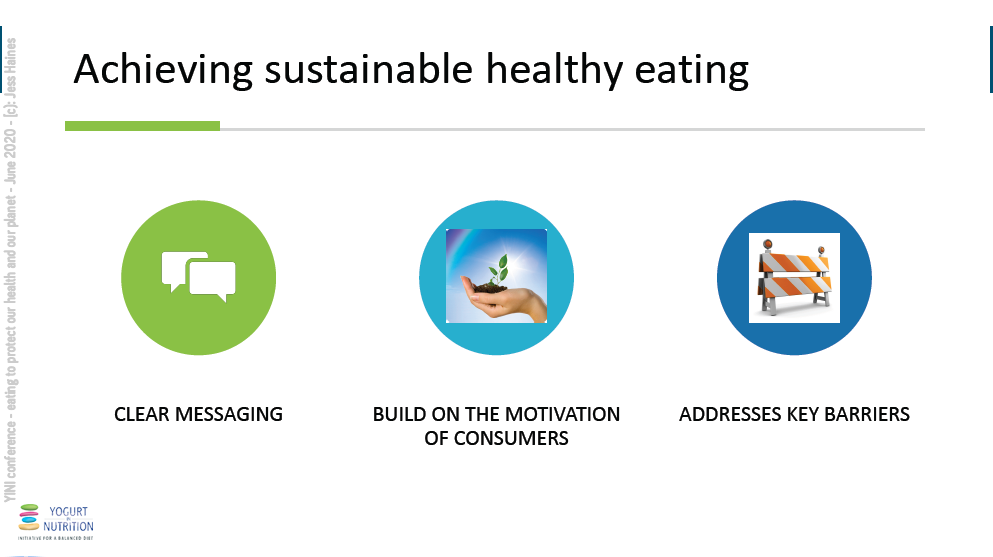
This context offers great opportunities to build consumer-level strategies in order to build a more sustainable healthy eating practice.
As an example, Jess Haines presented a community-based program, the ”Weeknight supper savers”, which aims to increase intake of fruits and vegetables and reduce household food waste.
Based on this experience and the different existing initiatives already in place, the key drivers to build sustainable consumer behavoirs are to focus and build initiatives on the consumers motivations, with clear messages and adressing the key barriers of change.
